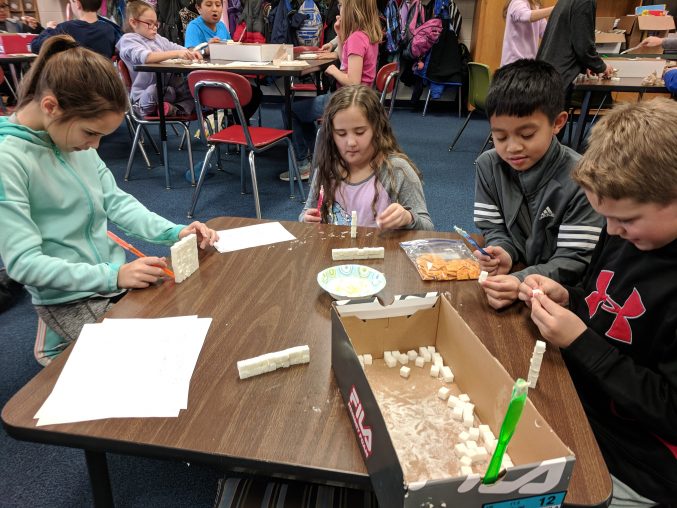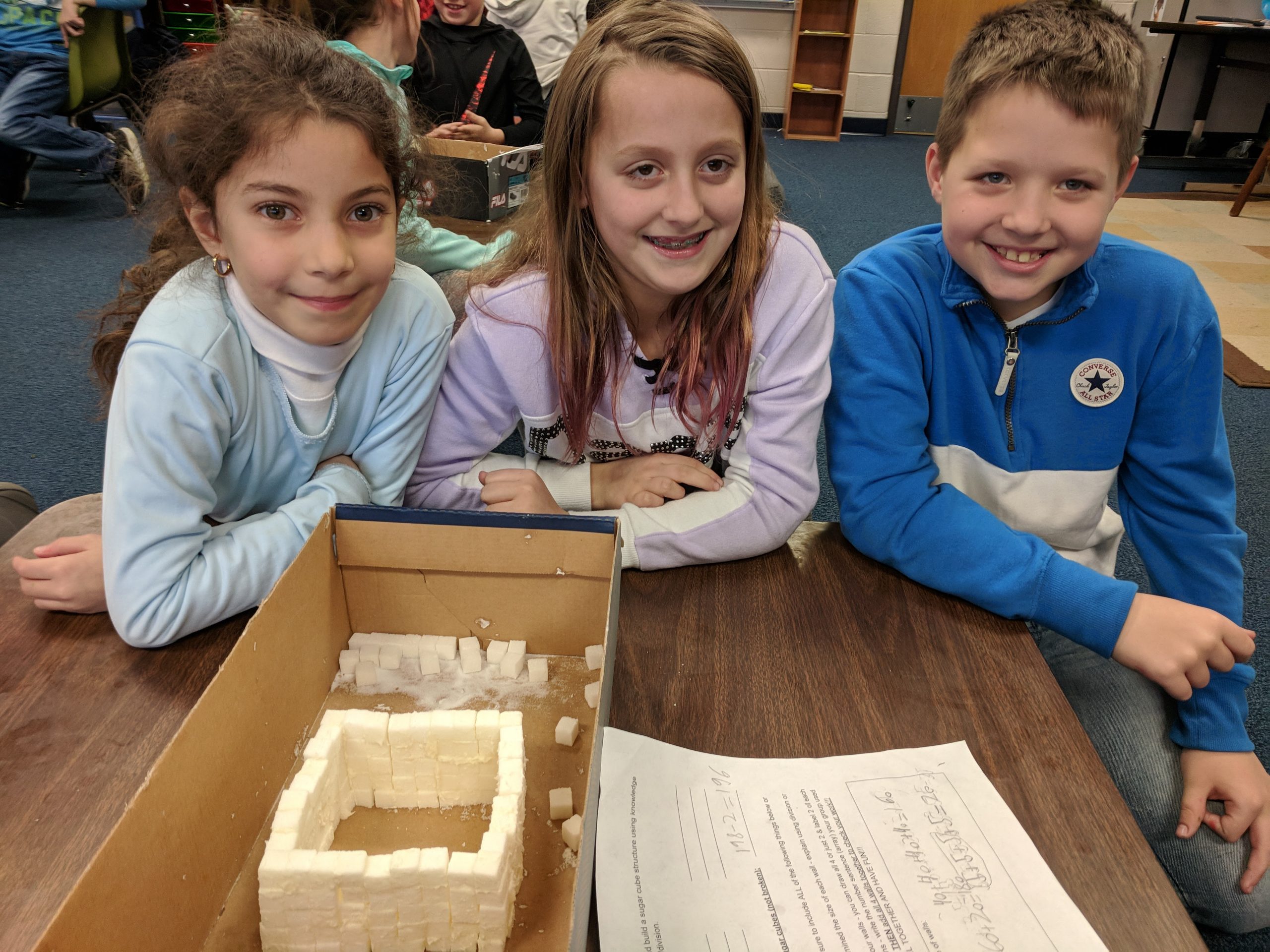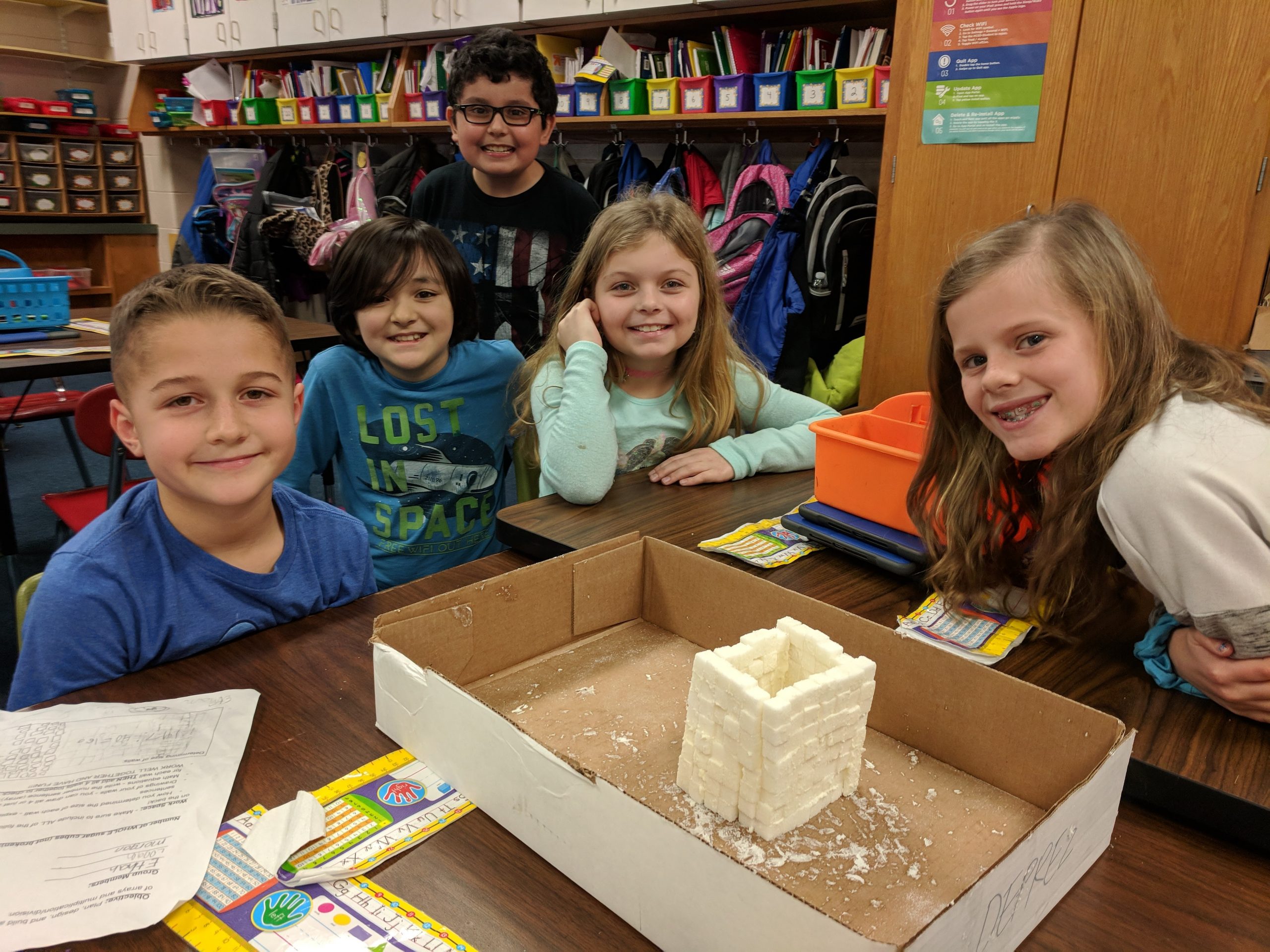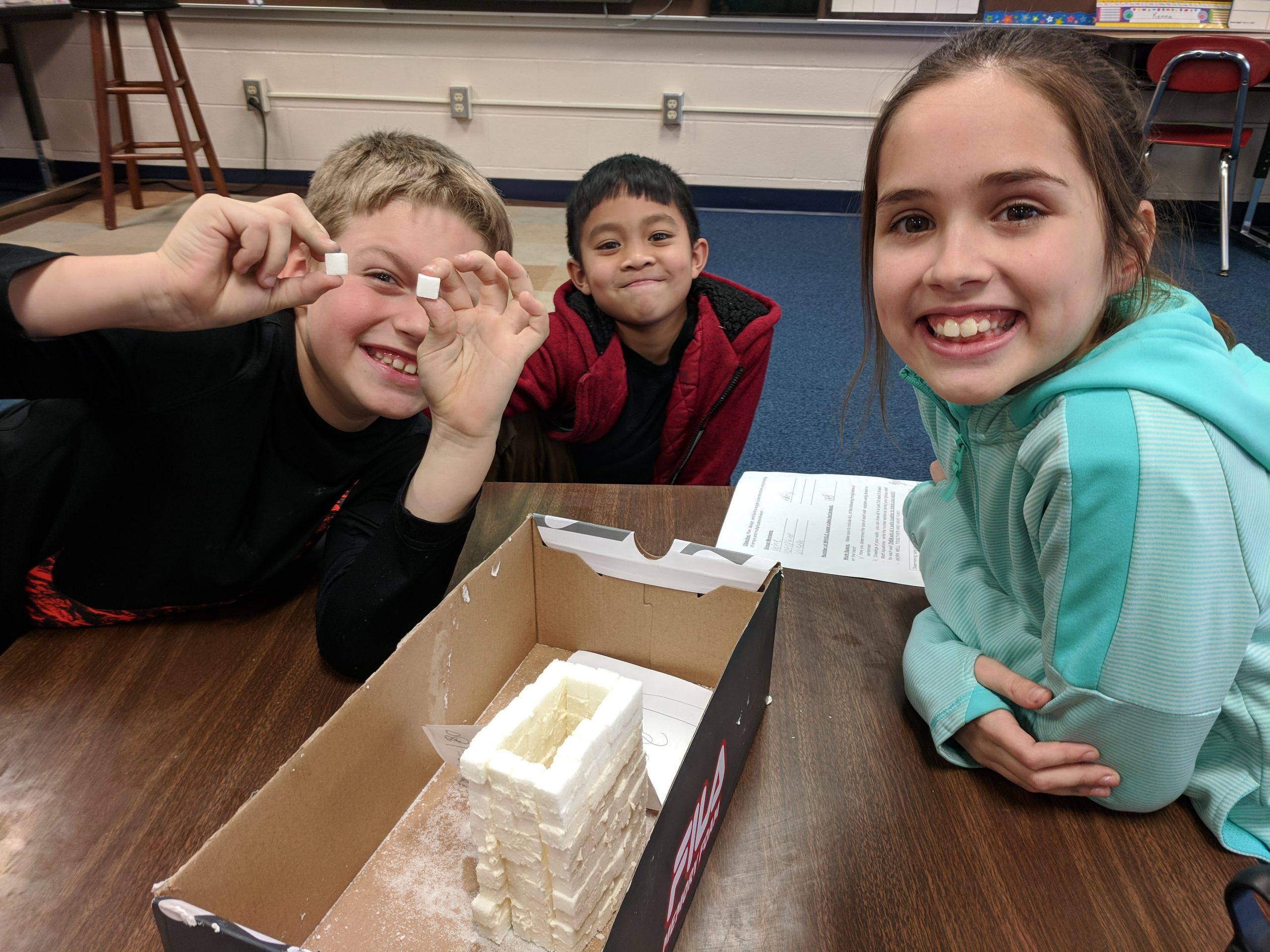Personally, I have always had a difficult time integrating math into my Iditarod unit of study. As a 3rd grade teacher I am usually busy preparing my students for THE tests (for 3rd grade reading and math). However, after the race has concluded, my students are in need of something that is more project-based that will still cover and review necessary content. That is where the following project comes into play.
The sugar cube dog house activity is a great way to teach area models and arrays to kids who have been learning different multiplication strategies. It is actually better suited for students in upper elementary as they have to work with bigger products and quotients.
- Students in 2019 with their sugar cube creations.
- Students in 2019 with their sugar cube creations.
- Students in 2019 with their sugar cube creations.
In this project, students work together in groups to design, plan, construct and present a structure which they build entirely out of sugar cubes and frosting. I enjoy this activity because it gives students the opportunity to have fun with math, and also tie in what they learn about dog houses. One of my current students even came up to me this week and said that when her older sister was in my class “She thought it was the best activity she did all year!” and asked “When are we going to do it?” As teachers, we always love to hear this sort of thing. The kids REALLY enjoy the activity and be prepared, because it does get messy. Just make sure the students don’t eat the materials!
Here is the basic outline:

Students in 2019 constructing their house.
To develop the understanding and look of doghouses, check out a couple of links on the Iditarod EDU website:
- https://iditarod.com/edu/doghouse-design-with-musher-matt-failor/
- https://iditarod.com/zuma/hands-on-learning-at-michigan-symposium/
I usually split the kids up into groups of about 4 and have them design a “blueprint” for their dog houses using the total number of whole sugar cubes in their box. They use array models to show their thinking and planning. After they make a design, and the teacher checks the math, the teams start building. Each team gets 1 box, and one container of vanilla icing to use as the “cement”. (Once it dries, it is really solid if there is enough icing applied). The teacher then inspects each design, to see if it matches the blueprint. If it looks good, groups can extend the activity by constructing a roof or other items found in a dog yard to complete their build. It is also a great exercise in “productive struggle” when working as a group.
I hope your students enjoy this activity as much as mine do!
Teachers:
Check out the full lesson plan and planning pages here: STEM Sugar Cube Dog House Math.docx

Students in 2019 constructing their house.





